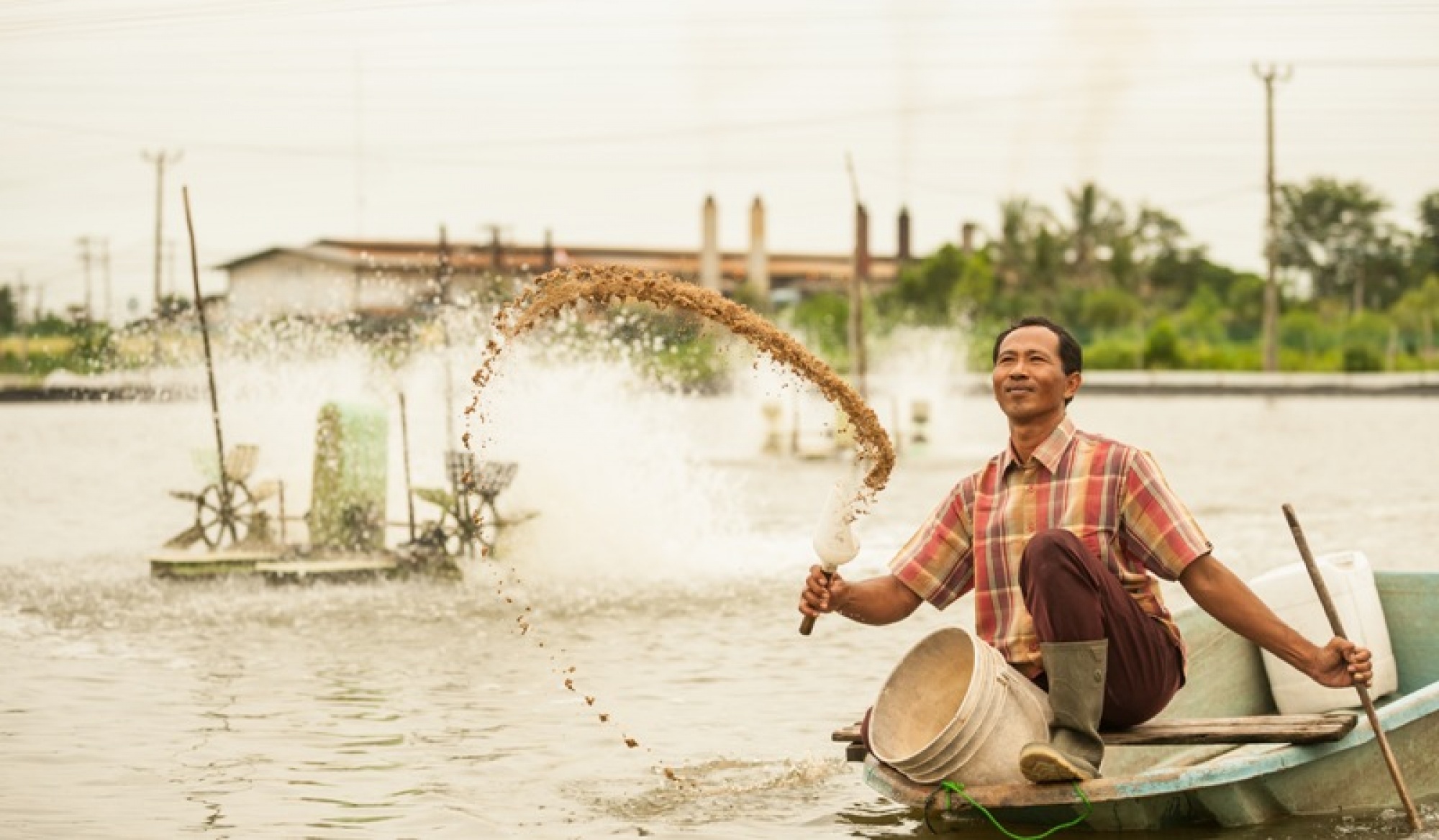
18 March 2021
Fisheries Outlook 2021 – March 18, 2021
The beginning of 2020 became a big momentum for the global community with the outbreak of the COVID-19 disease. The disease pandemic period that visited almost the entire country also had a major impact on all lines, including aquaculture or aquaculture. The implementation of Large-Scale Social Restrictions (PSBB) in the early days of the COVID-19 pandemic, had created a wave of panic in many business sectors. The fishery processing industry is also not spared from the impact, some have reduced and even stopped their production.
Issues like this inevitably trigger a domino effect on the supporting industries, one of which is the shrimp farming industry as a supplier of raw materials. But luckily this panic did not last long, the fish processing factory was able to return to active operations. Logistics travel that had been tightened at the beginning of the pandemic received an exception for the logistics of transporting fishery products. So that the delivery of crops for factory raw materials can run normally. Especially for shrimp commodities, it was unexpected that throughout 2020 there was a fantastic increase in exports.
Indonesia's shrimp export data for 2020 based on Marine and Fisheries Ministry (KKP) data shows encouraging developments, although the food service market that absorbs shrimp commodities has experienced a drastic decline due to the COVID-19 pandemic. Under these conditions, shrimp exporters quickly switch to foreign retail markets so that the value of Indonesian shrimp exports will increase by 35% in 2020. Shrimp commodities make up around 40% of the total value of Indonesian fishery exports.
However, there are several aquaculture fishery commodities that are under pressure due to the COVID-19 pandemic, such as catfish and carp. Related to this, to see the market conditions that occurred during the covid-19 pandemic and to see the opportunities, challenges and obstacles that exist for aquaculture products, GPMT together with Trobos Magazine held a Fisheries Outlook 2021 with the theme "Repositioning Indonesian Aquaculture Fisheries on the World Stage" virtually through zoom app.
This fishery outlook was opened by the Director General of Aquaculture of the Ministry of Marine Affairs and Fisheries (KKP) – Slamet Soebjakto who said that the aquaculture sub-sector received attention from President Joko Widodo to increase all its potential. Indonesian aquaculture has a number of leading commodities in the export market. Export products that are the focus of KKP include shrimp, lobster, and seaweed. Shrimp was chosen as a priority commodity because it has a fairly high export volume. Data shows Indonesia's shrimp exports amounted to 239 thousand tons with a transaction value of 2.04 billion US dollars.
The contribution of Indonesian shrimp is recorded at 7.15% of total world exports. Currently, Indonesia is the largest shrimp producer in the world after China. He explained that currently aquaculture has become a force for marine and fisheries development in Indonesia. The government is also encouraging the development of cultivation villages based on local wisdom. We know that as a maritime country, our fish resources are very fast, but if they are exploited continuously without considering sustainability, it takes a lot of effort and time to restore them.
Previously, the Minister of KKP - Sakti Wahyu Trenggono targeted the volume of shrimp exports to increase 3 times or more than 250% until 2024. According to him, the export target of this commodity is prioritized to the United States (US) to China. The KKP will facilitate the development of a shrimp estate, which is an intensive-scale cultivation system, with a production target of around 40 tons per hectare per year.
In the same place, the General Chair of the Indonesian Aquaculture Society (MAI) – Prof. Rokhmin Dahuri said that development, investment, and business in the aquaculture sector from upstream to downstream will remain bright (bright, prospective) in 2021 and 2022. The Professor of the Faculty of Fisheries and Marine Sciences, IPB explained that in 2020, the export volume The highest commodity was shrimp, from the previous year the highest was seaweed. Currently, it is clear that the performance of aquaculture can be seen in terms of productivity, utilization rate (production/potential), aquaculture profits, competitiveness, inclusiveness (fairness), and sustainability.
There are three development policies and programs that must be carried out by the government in boosting the performance of the aquaculture sub-sector, namely Revitalization, Extensification, and Diversification. Indonesia must implement a program of revitalization, diversification, and extensification of aquaculture businesses in marine waters (mariculture), brackish waters or ponds (coastal aquaculture), and inland waters. The revitalization program aims to increase productivity, efficiency, competitiveness, inclusiveness, and sustainability of each existing aquaculture business unit.
The diversification program means developing aquaculture business with new species, such as jerbung shrimp, rostris shrimp, cobia fish, crabs, barking crabs, sea cucumbers, freshwater crayfish, and invertebrates. This program is very important to meet the growing demand for aquaculture commodities and products.
The extensification program means developing aquaculture businesses in new areas and territories. The superior commodities for the extensification program in marine areas include: white snapper, several types of grouper, pomfret, lobster, sea cucumber, several types of seaweed, and pearl oysters. In order to be productive, efficient, competitive, and sustainably prosper, all aquaculture businesses, whether through revitalization, diversification, or extensification programs must meet their economies of scale. In addition, implementing Best Aquaculture Practices (Best Ways of Cultivation).
The government must really go all out to make aquaculture a leading sector and a driving force for the national economy in addition to other sectors in the form of policies that support aquaculture from upstream to downstream.
Source : AP5I


